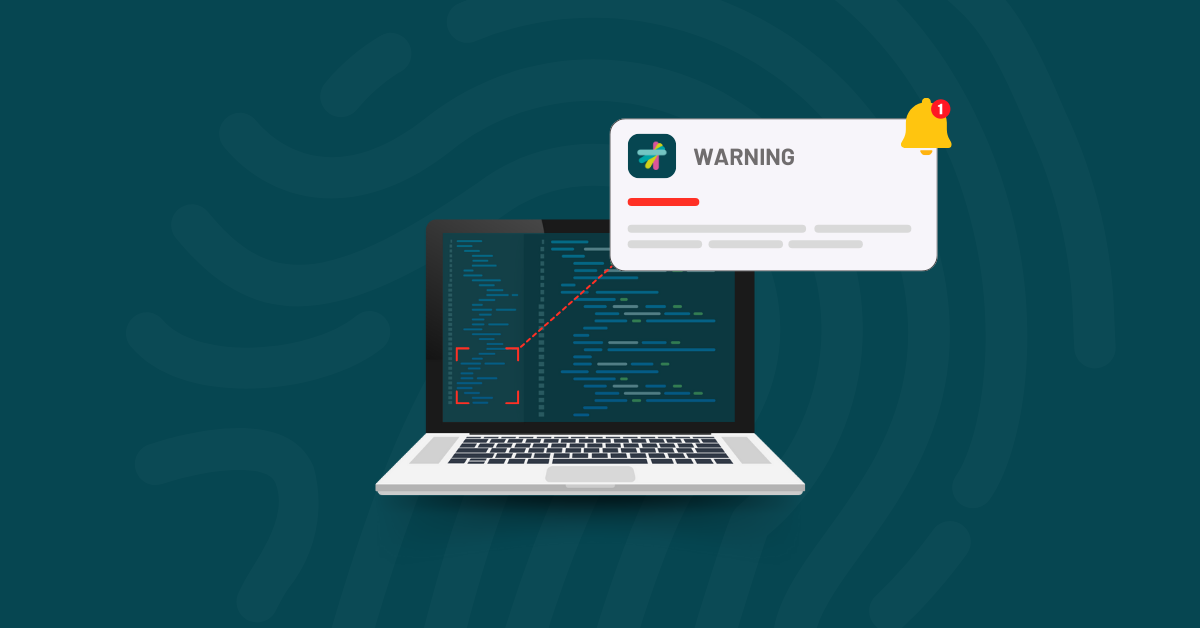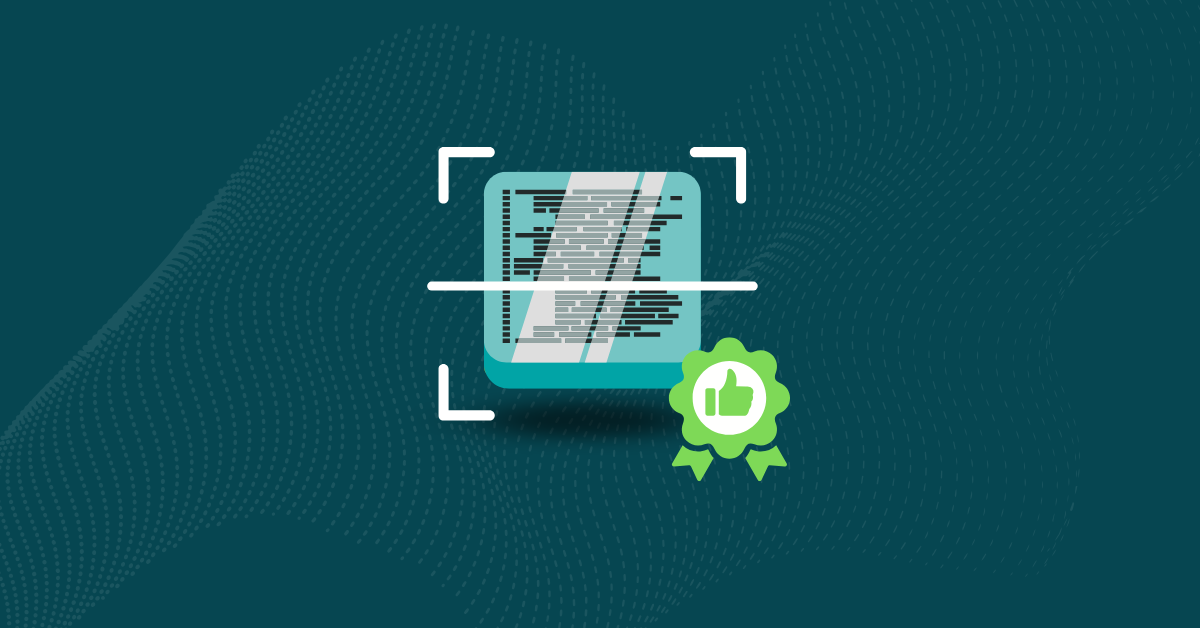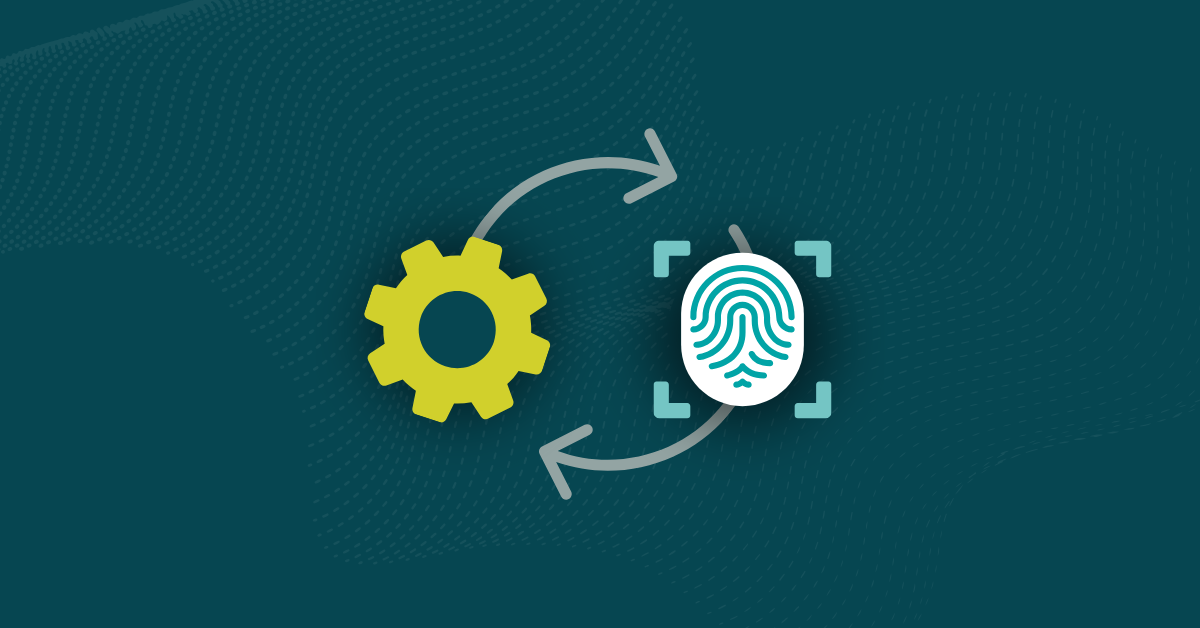

AI coding assistants can help you ship faster, but they can also ship vulnerabilities straight into production. Unfortunately, this increase in efficiency has been accompanied by greater security risks. Recent research indicates that approximately 25–30% of code generated by models like GitHub Copilot contains Common Weakness Enumerations (CWEs). That means AI code security needs to be a priority since AI assistants can introduce vulnerabilities.
The good news? You don’t have to choose between speed and security. With the right processes, tools, and human oversight, you can use the power of AI while maintaining robust security standards across your development pipeline.
AI code security refers to the practices, tools, and processes used to safeguard code written by or with the assistance of AI coding assistants, such as GitHub Copilot, Amazon CodeWhisperer, or Tabnine. It matters because AI-generated code—while useful—is not free of security vulnerabilities and other risks that you’re less likely to encounter with manually written code.
This risk isn’t just hypothetical. A recent survey of software engineering leaders revealed that more than half report encountering problems with AI-generated code. According to the same study, 68% spend more time resolving AI-related security vulnerabilities. An astonishing 92% stated that AI tools are increasing the amount of low-quality code that requires debugging.
Every line of AI-generated code should be treated as potentially hazardous until it has been thoroughly reviewed, tested, and validated against your security features and coding standards. This means applying the same secure coding practices you’d use for human-written code, plus additional safeguards for AI content.
The stakes are particularly high for industries such as fintech, healthcare, and government sectors, where sensitive data and privacy concerns necessitate strict compliance. A single SQL injection vulnerability or exposed API keys in AI-generated code could lead to data breaches, fines, and reputational damage.
AI-driven development introduces security risks you wouldn’t encounter with manual code creation. Understanding these unique security risks is essential so your team can implement effective digital security solutions.
AI models may sometimes create code that references functions, APIs, or libraries that don’t actually exist, a phenomenon known as hallucinations. These fictional references can create dependencies on non-existent packages, opening the door to package confusion attacks, wherein malicious actors publish fake packages with similar names.
One study found that roughly one-fifth of AI-generated code dependencies are non-existent, creating significant supply chain security risks. Blindly installing these suggested packages may inadvertently introduce malware into your applications, so your organization must develop processes to test the secure application of every line of code your team deploys.
Manual code development tends to follow established patterns with built-in security checks. In contrast, AI models generate code based on potentially flawed training data, including secure and insecure code.
AI assistants may act inconsistently, suggesting the need for proper user input validation in one context but skipping it in another. This may result from the LLM’s internal processes or from how you phrase your prompt. Unfortunately, coders may not recognize how often this occurs.
A recent study found that coders who used an AI assistant wrote significantly less secure code than those who did not. Even though they created less secure coding, these participants believed their code was actually more secure than the manual creation group.
You must never assume your AI-generated code was created using industry-recognized best practices. Without proper review, vulnerabilities like SQL injection, cross-site scripting (XSS), and insecure deserialization can slip through.
AI models trained on older codebases may suggest outdated dependencies or coding patterns that no longer adhere to best practices. This includes recommending deprecated libraries with known vulnerabilities, outdated cryptographic algorithms, or authentication methods that no longer meet security standards.
Financial services companies face particular risks in this realm. That’s because AI might suggest legacy authentication patterns that don’t meet modern Open Web Application Security Project (OWASP) guidelines or secure financial applications.
One major downside to AI coding assistants is that they don’t understand your specific threat model, compliance requirements, or business logic constraints. That means these AI helpers can’t differentiate between code that handles sensitive information and public data, which means proper security controls may not be applied where they are needed.
Understanding and mitigating this limitation is crucial for healthcare organizations that handle protected health information (PHI) or government agencies that work with classified data.
Human oversight failure remains a risk worthy of particular attention. Developers may be lulled into a false sense of security after encountering clean, well-documented AI-generated code. Previous positive experiences may lead developers to skip necessary testing, which can reveal problems in later coding iterations.
So, how can you manage these risks effectively? The answer lies in adopting layered, proactive security strategies.
The best way to create secure AI-generated code is to take a multi-layered approach that combines automated tools, manual reviews, and process improvements across your development lifecycle.
Failing to adhere to these best practices can lead to costly and unnecessary efficiency issues for your organization. For example, one CTO reported an outage every six months at his company due to poorly reviewed code.
Every line of AI-generated code must undergo the same rigorous review as an equivalent piece of human-written code. This entails examining the code’s output and processes involved in achieving a given outcome.
To start, begin with a manual review that focuses on logic and intent. Train your developers to look for common AI-generated vulnerabilities, such as missing input validation, improper error handling, and insecure API key management. Create security checklists specific to your AI tools and coding patterns.
Complement manual reviews with automated debugging using Static Application Security Testing (SAST) tools. Kiuwan’s SAST solution can identify security vulnerabilities in AI-generated code as soon as it’s written, catching issues like hardcoded secrets, SQL injection vulnerabilities, and insecure cryptographic implementations.
It is also crucial to incorporate dynamic testing when reviewing code for potential security vulnerabilities. AI-generated code may pass static analysis but fail under real-world conditions. Security testing that validates input handling, authentication flows, and data processing logic can prevent costly errors.
Although AI assistants often suggest popular libraries and frameworks, this popularity doesn’t guarantee security. A strict dependency management system can help you catch vulnerable or nonexistent packages before they enter your codebase.
Consider using Software Composition Analysis (SCA) tools to automatically scan AI-suggested libraries for known vulnerabilities. For example, Kiuwan’s SCA capabilities help you maintain a clean Software Bill of Materials (SBOM) by identifying vulnerable dependencies and providing Autofix suggestions for safer alternatives.
Creating policies that prevent dependencies with high-severity vulnerabilities is also a good idea. Maintaining an approved list of vetted libraries for your AI tools can help avoid this problem if you work in a highly regulated industry like banking or healthcare.
To ensure secure coding standards are followed, your organization should enforce consistent security standards that apply to all code, regardless of its implementation. This involves implementing OWASP Top 10 protections, adhering to Computer Emergency Response Team (CERT) secure coding guidelines, and upholding your organization’s specific security policies.
Teach your developers how to securely prompt AI tools. Instead of asking for “user login code,” specify requirements like “user login code with input validation, secure password hashing, and protection against brute force attacks.” More specific prompts can help protect against insecure code.
Implement Security-as-Code policies that automatically enforce standards such as proper user input validation, secure output encoding, and handling of sensitive data. Adopting tools like Kiuwan can help your organization block non-compliant code from entering your main branches, ensuring consistent security regardless of the code source.
Managing AI-generated code can be difficult because AI code assistant tools often use abstract patterns that are difficult to audit. To avoid this issue, be cautious of overly clever solutions that introduce unnecessary complexity.
Steps to manage the complexity of your AI-generated code include flagging code with excessive abstraction, deeply nested logic branches, or helper functions that don’t have clear documentation. It’s a good idea to establish complexity thresholds. Prompting an additional review for AI-generated code that exceeds these thresholds is a great way to protect your organization from insecure code.
Securing AI-generated code requires integration across every phase of your development lifecycle. Here’s how to embed AI code security into each SDLC stage:
Establish clear policies for using AI tools before you start. Compose prompt guidelines to help you create secure code, specify which AI tools are acceptable for use by project type, and make security requirements for AI-generated code. For government and defense contractors, this includes ensuring AI tools comply with relevant security clearance and data privacy requirements.
Train developers to write security-focused prompts and tag all AI-generated code for traceability. Implement pre-commit hooks that automatically scan code with SAST tools before it enters your repository. Using a tool like Kiuwan’s IDE integrations can help you catch vulnerabilities as you write code by providing immediate feedback on security solution violations.
Run comprehensive security tests on all AI-generated code, including SAST, SCA, and dynamic application security testing (DAST). Include test cases for common AI vulnerabilities, such as SQL injection, insecure deserialization, and exposure of sensitive information. Automated testing should validate the functionality and security of AI-generated components.
Utilize Continuous Integration and Continuous Delivery/Deployment (CI/CD) gates to prevent insecure AI-generated code from reaching production environments. Implement policy-as-code that automatically blocks deployments containing high-severity vulnerabilities or non-compliant code patterns. This is especially critical for e-commerce and telecommunications companies handling customer data at scale.
Maintain audit trails of all AI-generated code and monitor for security incidents related to AI-generated vulnerabilities. Log which code was AI-generated, the tools used, and the review process. This information security tracking helps identify patterns and improve your AI security practices.
Automated scanning and enforcement should start the moment AI creates code. Tools like Kiuwan can integrate directly into your development environment. Kiuwan scans AI-generated code as it’s written. This real-time process enables the flagging of high-risk issues, such as hardcoded secrets, missing input validation, and logic flaws, in real-time.
You may find this particularly valuable for AI agents and automated development pipelines with limited human oversight. These automated tools can quickly and effectively uncover vulnerabilities that would be time-consuming to identify through manual review alone.
Policy enforcement at scale becomes increasingly important as AI adoption expands across development teams. Your security leaders need tools that consistently enforce OWASP, CERT, and internal secure coding policies across all AI-generated code.
Using Kiuwan’s policy engine allows you to define custom rules tailored to your AI use patterns, and it automatically blocks non-compliant code from entering production branches.
For regulated industries such as healthcare and financial services, this automated policy enforcement helps maintain compliance with standards like the Health Insurance Portability and Accountability Act (HIPAA) and the Payment Card Industry Data Security Standard (PCI DSS), as well as other industry-specific information security requirements.
Audit trails and traceability provide the documentation needed for compliance and incident response. When security platform tools track which code was AI-generated, what tools were used, and how it was reviewed, security leaders can quickly identify the scope of potential vulnerabilities and implement targeted fixes.
AI-generated code can enhance efficiency and code quality, but it is essential to maintain vigilance against potential security risks. To keep your organization safe, treat AI-generated code as potentially hazardous until it has been thoroughly reviewed, scanned, and tested.
To prevent these vulnerabilities from surfacing, embed secure coding practices early in your development lifecycle, maintain strict dependency management, and use human oversight and automated tools for layered protection.
Security tools like Kiuwan help development teams enforce secure coding standards, detect AI-related flaws, and reduce risk at scale. With proper integration into your CI/CD pipeline, these tools can catch vulnerabilities before they reach production. At the same time, they let your team benefit from AI-assisted development.
Request a free demo today to see how Kiuwan can help secure your AI-assisted development pipeline.


